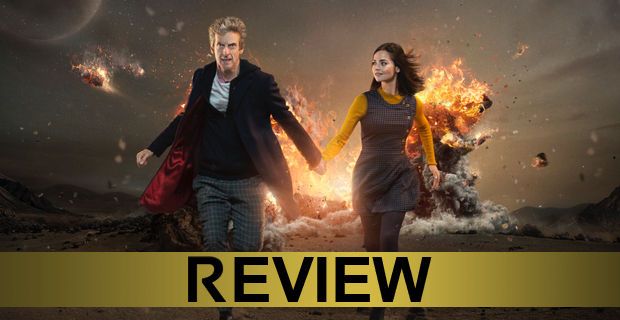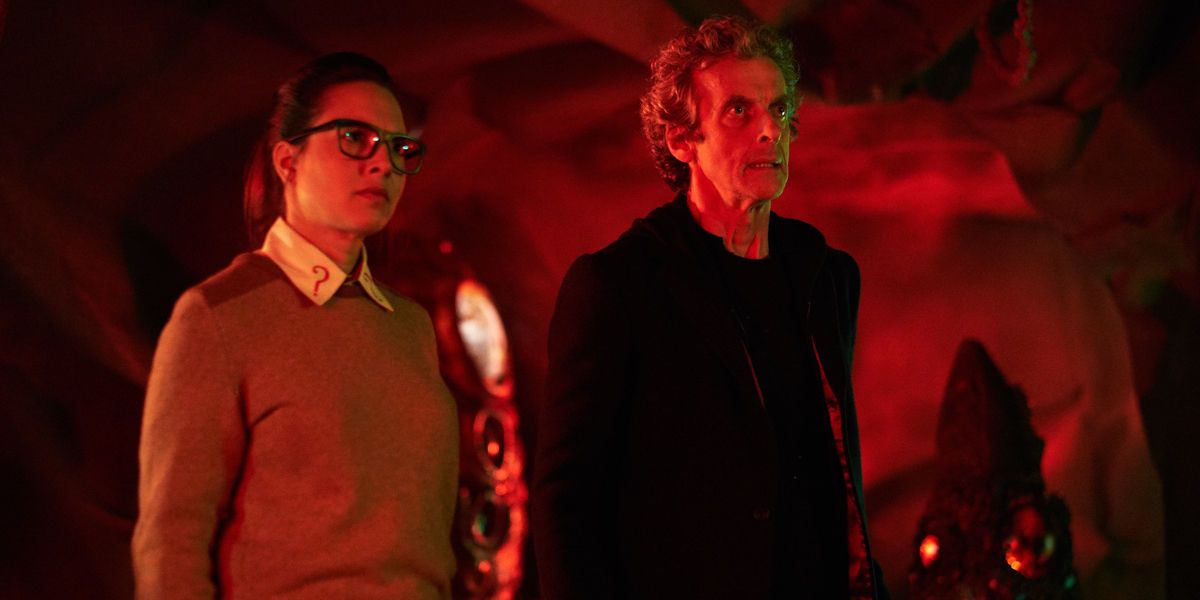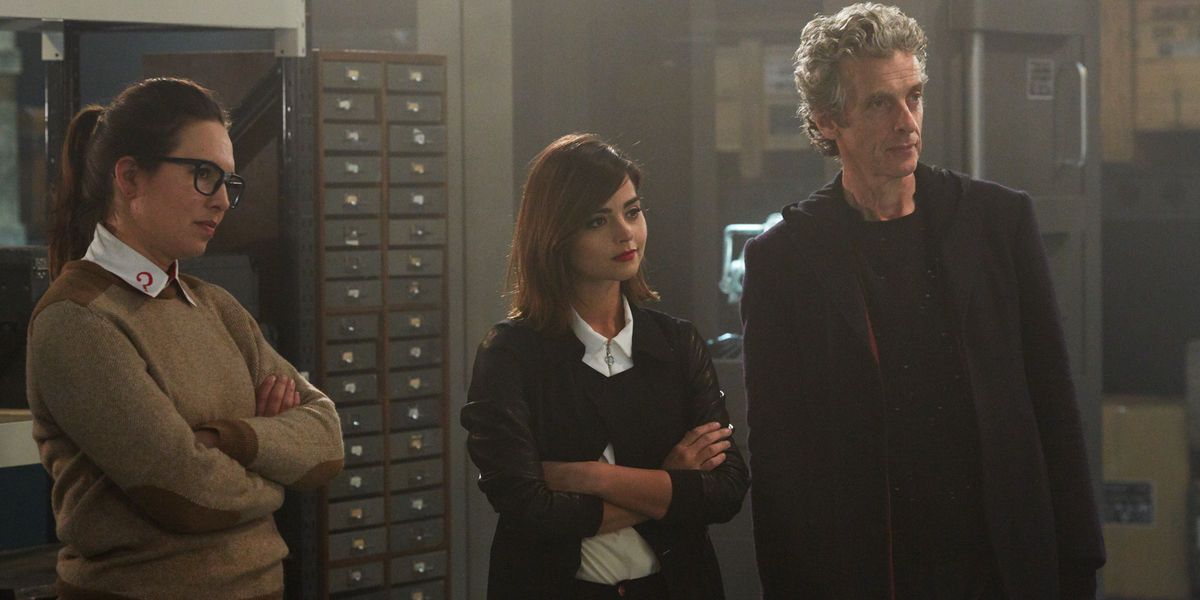[This is a review of Doctor Who season 9, episode 8. There will be SPOILERS.]
-
Last week's episode of Doctor Who went to a place the series normally doesn't venture in such specific ways. The 'Zygon Invasion' used the early stages of an assault by a radicalized faction of the 20 million Zygons calling Earth home to draw distinct parallels between extremist groups and many of the world's governments' reactions to them. Despite the clear similarities and the obviousness of his intentions, scriptwriter Peter Harness managed to utilize the tenets of science fiction and modern-day concerns to craft a compelling first half of a story about the futility of war.
While that episode made its points clear, it also threw Jenna Coleman's Clara into the mix, seemingly putting her life in danger by having her replaced in the real world by an alien named Zygella (or Bonnie, if you prefer). The idea of Clara being imprisoned in one of the aliens' pods, while an imposter ran around and shot presidential airplanes out of the sky with a "bazooka" initially registered as structurally necessary but narratively about as unimportant as the cliffhanger on which the previous week's entry ended. Cliffhangers that put the Doctor or his companion in immediate, life-threatening danger aren't really the sort of thing that drums up much in the way of genuine tension; they are more a part of the unspoken contract between a television series and its audience. Viewers expect there to be rising action at the end of one episode to help justify the storyline's weeklong delay and continuation into another hour.
So, it is more of a relief that the episode resolves Zygella's surface-to-air goodbye to the Doctor almost immediately, by having Osgood and the Doctor escape, thanks in large part to the interference run by the real Clara who is locked away in her own mind. It's an interesting storytelling device that is used frequently in the case of body swapping, possession, or imposter stories – the shred of humanity of the original version still locked away inside the vessel, fighting to keep the inhumanity of the interloper from winning out. While that helps to make the Doctor and Osgood's escape work in terms of whatever level of plausibility a series like Doctor Who needs, while also just getting the plot moving forward, there is a surprise waiting in the inevitable interaction between Clara and Zygella that works to pay off the ideas and themes of this two-part Zygon storyline in the same admirably overt manner in which those elements were introduced in the first place.
The initial interaction between Zygella and Clara plays out as one might expect – the two are at odds with one another and from that a conventional kind of conflict unfolds. Most episodes of this kind find a way to have fun with the idea of a person battling against herself, and 'The Zygon Inversion' is really no different. Coleman demonstrates the difference between Zygella and Clara in subtle ways, which actually plays into the efficacy of the episode's dialogue-heavy third act superbly. The purpose of Zygella and Clara's interaction at first serves to move the plot to the point that the Osgood box can finally be in play, but by keeping Zygella on an even keel – she's cold, calculating, and efficient, but not unreachable, like, say, a Dalek or Cyberman – the point that Harness makes through the Doctor, as the notion of war is boiled down to its futile, dirty essence of two sides itching to push a button because they believe they have no other alternative is made palpable.
The set up is deliberately simplistic; it takes the specificity of last week's allusions to radicalized threats and makes them a comprehensive indictment against humanity's warlike tendencies. The trick in Harness' writing, then, is that the set up of Kate Stewart and Zygella at opposite ends of a table, each one decision away from potentially annihilating their enemy or the entire planet, wouldn't have been nearly as successful were it not for the humanizing effect spun from Zygella's taking of Clara's form.
Granted, when all is said and done, Peter Capaldi does all of the heavy lifting in the episode – which isn't surprising, he is the Doctor, after all – but even though his long, openly earnest speech about the horrors of war and the difficulty of fighting for peace and forgiveness becomes the episode's showcase moment, it's the time spent with Zygella – with and as Clara – that allows Capaldi's moment to work. It's a clever twist on a familiar sci-fi storytelling device, and one that Harness uses to the advantage of the point he's trying to make, by removing the real Clara from her pod, so that Zygella's actions are no longer influenced by the human she's connected to, but rather by her own sense of humanity.
'The Zygon Inversion' succeeds in its earnestness by demonstrating how war and protracted conflicts tend to work so long as both sides are able to dehumanize one another, and so long as new generations of combatants can be bred to carry on the animosity and aggression rather than fight to forgive. It's not an unfamiliar message, but it is one that Doctor Who successfully delivers by presenting its anti-war sentiments from the viewpoint of an individual who has seen the untold horrors of conflict.
As has been the case all season long, the second half of this two-part story made the first half stronger in hindsight, which isn't always how these things unfold. Terrific performances all around made the Doctor's speechifying an engaging part of the hour, while also dropping a small hint about how the bond between the Doctor and Clara is going to lead to some emotionally tough times ahead.
-
Doctor Who continues next Saturday with 'Sleep No More' @9pm on BBC America. Check out a preview below:
Photos: BBC Worldwide Limited



